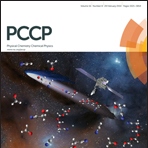
– A research group from the Alexandre Yersin Department of Solar Energy and Environmental Physics, Jacob Blaustein Institutes for Desert Research at BGU, led by Dr. Arik Yochelis and Dr. Iris Visoly-Fisher, has developed theoretical and experimental methods to understand how the spatial organization of highly concentrated ions in a liquid medium affects the chemical/electrical energy conversion.
The use of solar energy as an alternative energy source comprises different technologies, ranging from electricity generation by solar cells to energy storage by batteries or by water splitting to produce hydrogen fuel. Energy storage is important for the use of solar energy at times when sunlight is not available, such as during the night or cloudy weather periods. Since electric charge transfer is at the heart of such electrochemical technologies, a large amount of electrical charges in the medium is desirable to enhance the energy harvesting efficiency. Consequently, ionic liquids, being molten salts at room temperature and thus comprising high charge density, became highly attractive for energy applications. However, along with scientific advances such unique liquids also demonstrate fundamental inconsistencies about their physio-chemical behaviors.
Many studies have shown that in ionic liquids charge organization near the electrodes is substantially different from what is observed for traditional electrolytes (such as table salt dissolved in water): near the electrodes, charges assemble in a novel layered structure of alternating positive and negative ion layers. On the other hand, other researchers have shown that in ionic liquids positive and negative ions may associate into neutral complexes, preventing the formation of the layered structure. Naturally, these apparently conflicting discoveries have been the focus of a recent scientific controversy, as was documented in the journal Proceedings of the National Academy of Science. Structures forming adjacent to the electrode surface are of special significance for nano-technological electrode developments, where such small dimensions become dominant.
Using theoretical methods, Yochelis reconciles the debate about the assembly of ions near the electrodes. Yochelis showed that under different experimental conditions, either layered or non-layered assemblies may form. His findings were just published in Physical Chemistry Chemical Physics in an article entitled, “Transition from non-monotonic to monotonic electrical diffuse layers: Impact of confinement in ionic liquids.”
"In practice," he claims, "It seems that the controversy stems only from our lack of basic understanding of ionic liquids, and that in fact all researchers are correct in their interpretations. Obviously, basic science studies of the physical and chemical mechanisms will significantly improve our knowledge and allow better design of devices (based on ionic liquids) for alternative energy purposes."
